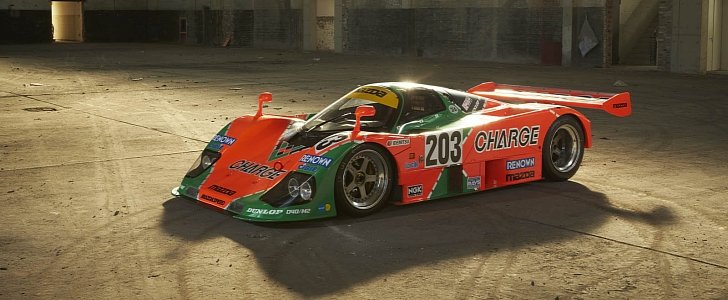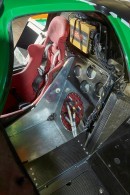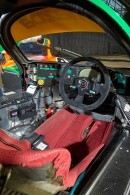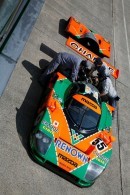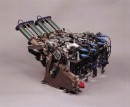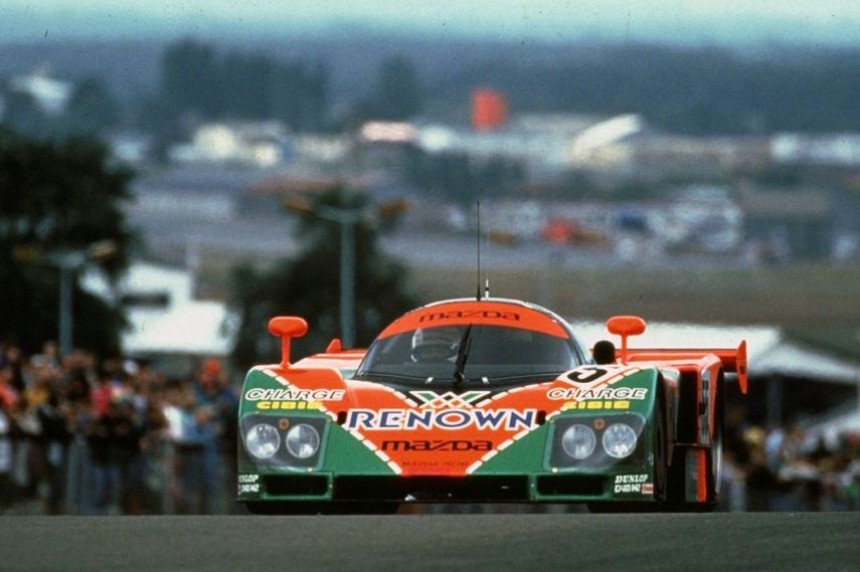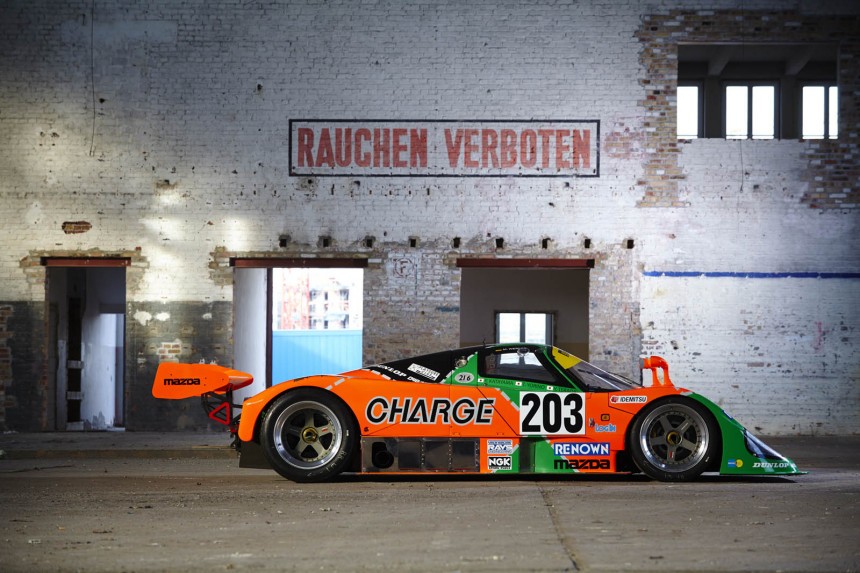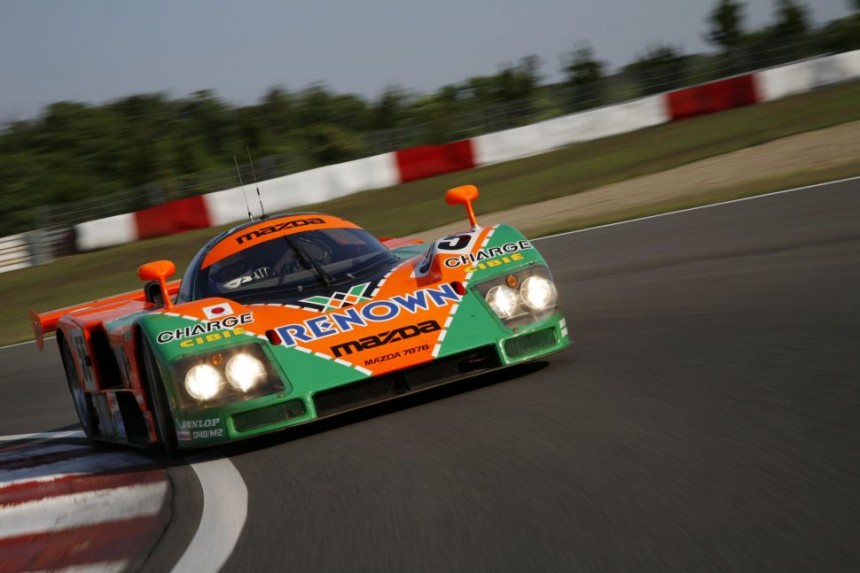Half a century ago, a small Japanese company from Hiroshima by the name Toyo Kogyo made an interesting decision, and a massive leap of faith.
They usually offered products under the Mazda brand in that period, name that they’d formally adopt in 1984, but if one thing is certain it was that somewhere in the late 1960’s they decided “normal” vehicles don’t cut it for them anymore.
They were keen to produce vehicles with a different type of motor, a rather unusual one at the time known as the Wankel engine, the prospects of which were very promising but at the same time kind of foggy and its destiny unknown. It could’ve gone either way, but fortunately it ended on a high note.
Now, looking at the hype that the RX-Vision Concept created in the industry recently, we took a moment to reminisce on the importance of rotary engines in Mazda’s journey, one with screams and high pitched sounds of burning dinosaurs at 9,000 RPM, which for many years have been the brand's trademark.
The story focuses on the R26B rotary engine, to be more precise, the one in the unmistakable Mazda 787B Le Mans Group C race car that brought the very first endurance victory for any Nippon manufacturer back in 1991. Mazda was the only Japanese racing team that managed to leave Circuit de la Sarthe crowned as victors, more so with a rotary engine, a record that stood unbeaten for 27 years until the likes of Fernando Alonso managed to bring the victory for Toyota GAZOO Racing. In a very sophisticated hybrid LMP1 and with barely any competition, that is.
It’s not a secret that most of the times at Le Mans there is no arrogant confidence in victory until the very end of the race, and more so back in the day. It took the 787B an astonishing 21-hour run to break forward, with back and forth battles with Sauber Mercedes – with Michael Schumacher as a pilot - and Jaguar, who have been splitting victories between them for the past 3 years.
Once in front, Johnny Herbert, one of the 3 Mazda pilots and the one who “brought it home” did not give up until the end, and all 250,000 spectators witnessed how a screaming monster with a rotary engine crossed the finish line first, in all its glory.
The success, though amazing, was kind of short-lived because as early as the next year, in 1992, rotary engines were banned from motorsport following new regulation changes. They were actually supposed to be banned in 1991, but Mazda insisted that there was not enough time to come up with a different design.
Well sure, a victory is still a victory you might say, but having invested God knows how much time, effort and money into creating this ultra-fast but also reliable engine, the Japanese manufacturer did not get the return it hoped, or deserved for that matter. Put it this way, Mazda decided not to advertise that much a victory achieved with yesterday’s rules, hence putting the tick in their record book, and sending the 787B prototype to the factory museum in Hiroshima.
It was kind of a letdown, as Mazda was struggling to find the perfect formula for winning the Le Mans race for a couple of years now. The 787B was not a new car by any means, it was an evolution of the 767 and 767B – the B was added to the cars that were more focused on cornering speed - race cars that were used during the 1988 and 1989 seasons.
The winning secret was in the variable length telescopic intake runners, that were previously optimized in such a way that the power and torque of the engine would vary at different RPM levels, good for short boosts of power, but bad in the long run. For the 1991 championship, the system became more complex and had adapted a continuous variable approach, a formula that was way more efficient than the previous version which had “steps” for different revving ranges. To make this work, some magic in the ECU controlled the new telescopic intakes resulting in constant torque of 448 pound-feet (608 Nm) at around 6,500 RPM.
Complete that with three spark plugs per rotor instead of the previous motor, the 13J’s two plug setup, and some carbon fiber apex seals (a miracle how they managed to keep the temperatures down and not catch fire), and the R26B was capable of delivering a maximum power of 900 HP, in 1991, truly impressive taking into account that the Sauber-Mercedes had about 730.
There was a decision though to limit the power to 700 HP during the race, to favor reliability. It’s kind of understandable taking into account that the race had 326 laps, aka 3,064 miles (4,932 km), and the car showed an average speed of 128 mph (205.38 kph), 700 hp was clearly enough to compete for a win.
About reliability, not only did the engine withstand 24 hours of pedal to the metal racing, but upon inspection after the race, Mazda engineers said that the R26B was in such a good condition that it could take the start in another 24 hours race with only an oil change.
Over the past 100 years or so, many conventionally-fueled engines were created and made their power using the usual configuration, both in terms of simplicity of design and efficiency. But the Wankel-Rotary engine surely is one of the best implementations that came to mass production, and it’s all thanks to Mazda and their dedication towards the cause.
Until we can please our ears with something that sounds as good, or something that has this much history in motorsport, or notoriety for that matter, we can enjoy a full lap of the number 55 winning car, the Mazda 787B taking the Circuit de la Sarthe with no other than the man who brought it to victory, Johnny Herbert. Enjoy.
They were keen to produce vehicles with a different type of motor, a rather unusual one at the time known as the Wankel engine, the prospects of which were very promising but at the same time kind of foggy and its destiny unknown. It could’ve gone either way, but fortunately it ended on a high note.
Now, looking at the hype that the RX-Vision Concept created in the industry recently, we took a moment to reminisce on the importance of rotary engines in Mazda’s journey, one with screams and high pitched sounds of burning dinosaurs at 9,000 RPM, which for many years have been the brand's trademark.
It’s not a secret that most of the times at Le Mans there is no arrogant confidence in victory until the very end of the race, and more so back in the day. It took the 787B an astonishing 21-hour run to break forward, with back and forth battles with Sauber Mercedes – with Michael Schumacher as a pilot - and Jaguar, who have been splitting victories between them for the past 3 years.
Once in front, Johnny Herbert, one of the 3 Mazda pilots and the one who “brought it home” did not give up until the end, and all 250,000 spectators witnessed how a screaming monster with a rotary engine crossed the finish line first, in all its glory.
The success, though amazing, was kind of short-lived because as early as the next year, in 1992, rotary engines were banned from motorsport following new regulation changes. They were actually supposed to be banned in 1991, but Mazda insisted that there was not enough time to come up with a different design.
It was kind of a letdown, as Mazda was struggling to find the perfect formula for winning the Le Mans race for a couple of years now. The 787B was not a new car by any means, it was an evolution of the 767 and 767B – the B was added to the cars that were more focused on cornering speed - race cars that were used during the 1988 and 1989 seasons.
The winning secret was in the variable length telescopic intake runners, that were previously optimized in such a way that the power and torque of the engine would vary at different RPM levels, good for short boosts of power, but bad in the long run. For the 1991 championship, the system became more complex and had adapted a continuous variable approach, a formula that was way more efficient than the previous version which had “steps” for different revving ranges. To make this work, some magic in the ECU controlled the new telescopic intakes resulting in constant torque of 448 pound-feet (608 Nm) at around 6,500 RPM.
Complete that with three spark plugs per rotor instead of the previous motor, the 13J’s two plug setup, and some carbon fiber apex seals (a miracle how they managed to keep the temperatures down and not catch fire), and the R26B was capable of delivering a maximum power of 900 HP, in 1991, truly impressive taking into account that the Sauber-Mercedes had about 730.
About reliability, not only did the engine withstand 24 hours of pedal to the metal racing, but upon inspection after the race, Mazda engineers said that the R26B was in such a good condition that it could take the start in another 24 hours race with only an oil change.
Over the past 100 years or so, many conventionally-fueled engines were created and made their power using the usual configuration, both in terms of simplicity of design and efficiency. But the Wankel-Rotary engine surely is one of the best implementations that came to mass production, and it’s all thanks to Mazda and their dedication towards the cause.
Until we can please our ears with something that sounds as good, or something that has this much history in motorsport, or notoriety for that matter, we can enjoy a full lap of the number 55 winning car, the Mazda 787B taking the Circuit de la Sarthe with no other than the man who brought it to victory, Johnny Herbert. Enjoy.
